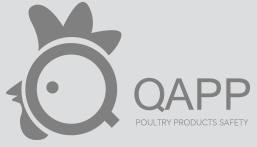
WP1 – Enumeration and detection of Microbiota (1–30M)
- D1.1 Enumeration and detection of specific spoilage microorganisms at the products under evaluation (24M)
- D1.2 Enumeration and detection of pathogens at the products under evaluation (30M)
- D1.3 Specification of “shelf life” and hazard characterization of the products under evaluation (30M)
WP2 – Products fingerprint (3–36M)
- D2.1 Report with the correlation of data received from WP1 & WP2. Specification of population levels and signals received with spoilage. (20M)
- D2.2 Report on the application of non-invasive analysis instruments to the assessment of the spoilage (36M)
- D2.3 Report on the development and validation of models (36M)
WP3 – Quality and safety predictive models (4–36M)
- D3.1 Data Analysis Mechanisms and Software Components for "omics" (24M)
- D3.2 Analytical report on the application of the developed models to predict spoilage (32M)
- D3.3 Report on the validation of the most appropriate models for product quality and safety - software repairs (36M)
WP4 – Development of novel cloud based repository (cloud-enabled model and data storage system) (3-36M)
- D4.1 Requirements, Functional Requirements and Agile User Stories of the Platform, the services and project applications (12M)
- D4.2 QAPP Integrated Services Platform (ISP) – QAPP Data Repository and central data and product logging application (12M)
- D4.3 ISP - QAPP – Web Services Infrastructure, Sensor Data Collection & QR Codes (36M)
- D4.4 ISP - QAPP – Integration of data analysis mechanisms & software components for "omics" (28M)
- D4.5 QAPP Application: End Users Interfaces and Web App Features (30M)
- D4.6 QAPP Mobile App for smartphones and tablets for producers and consumers (36M)